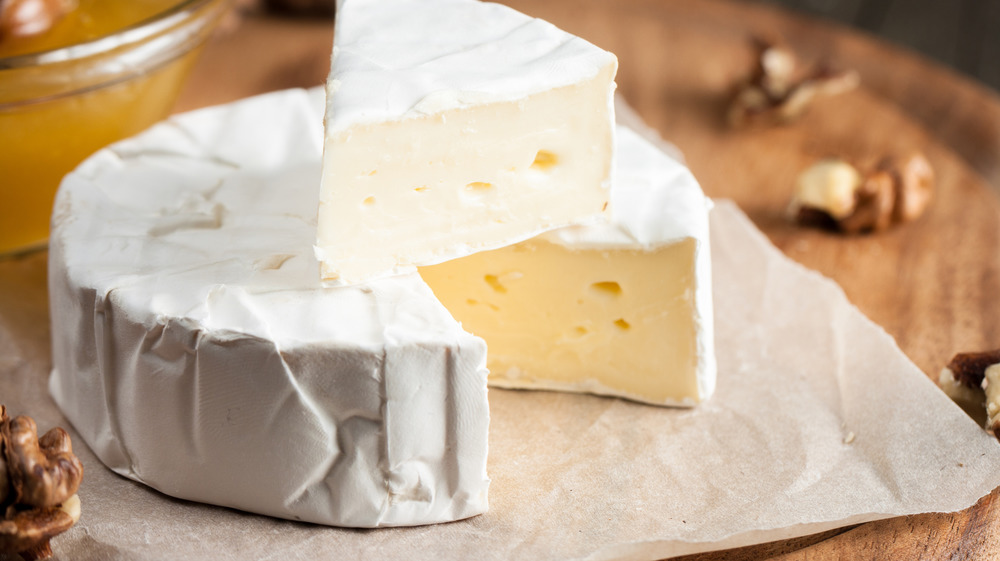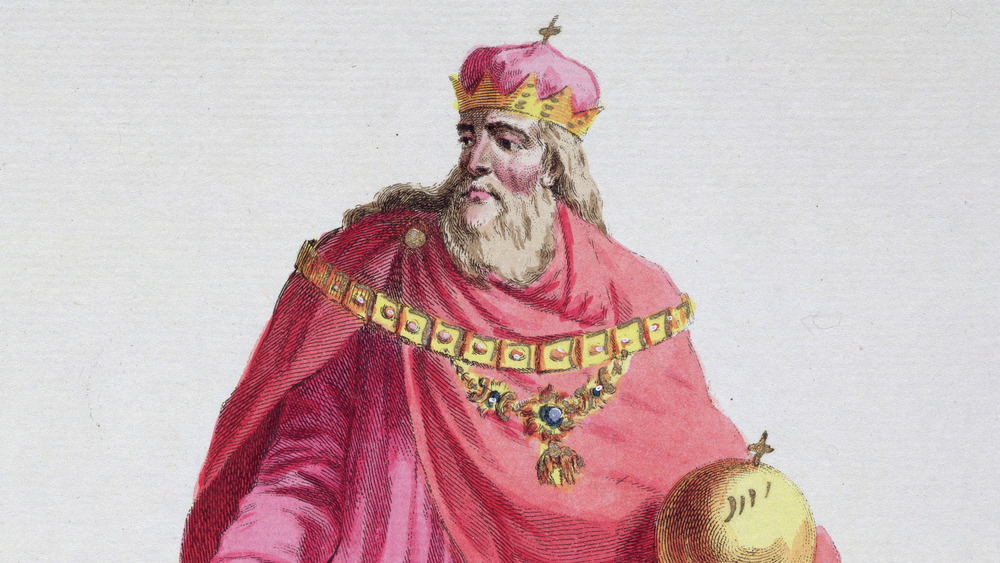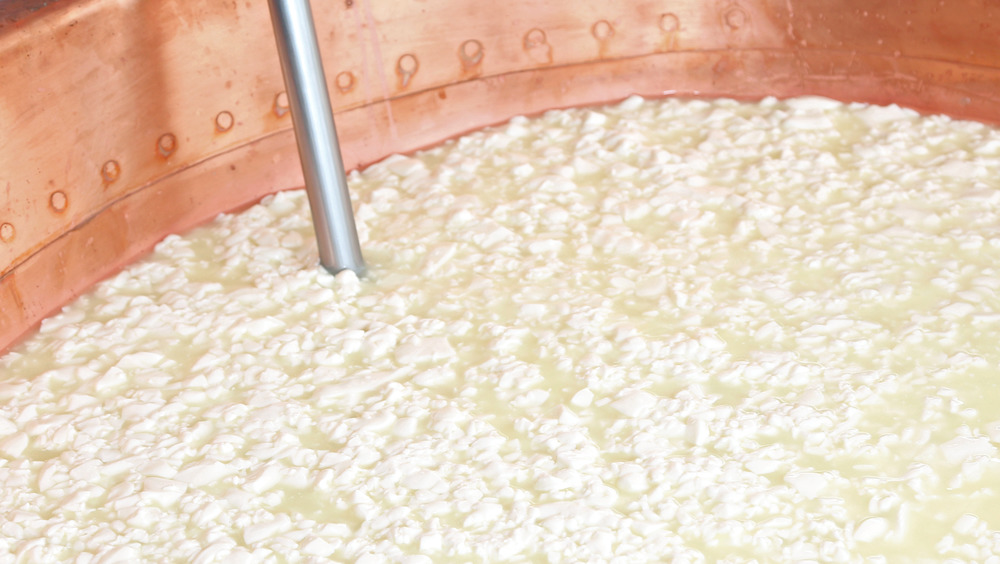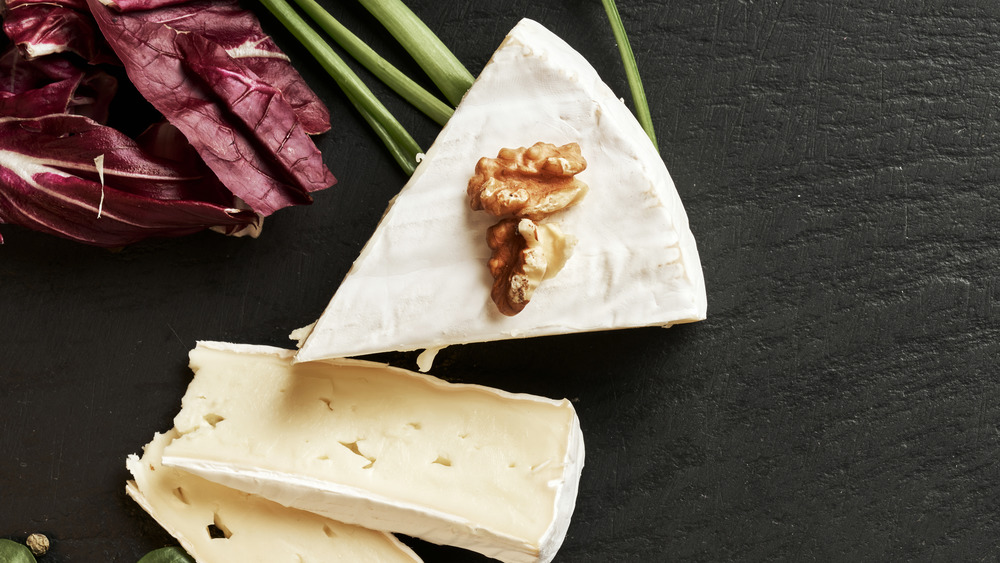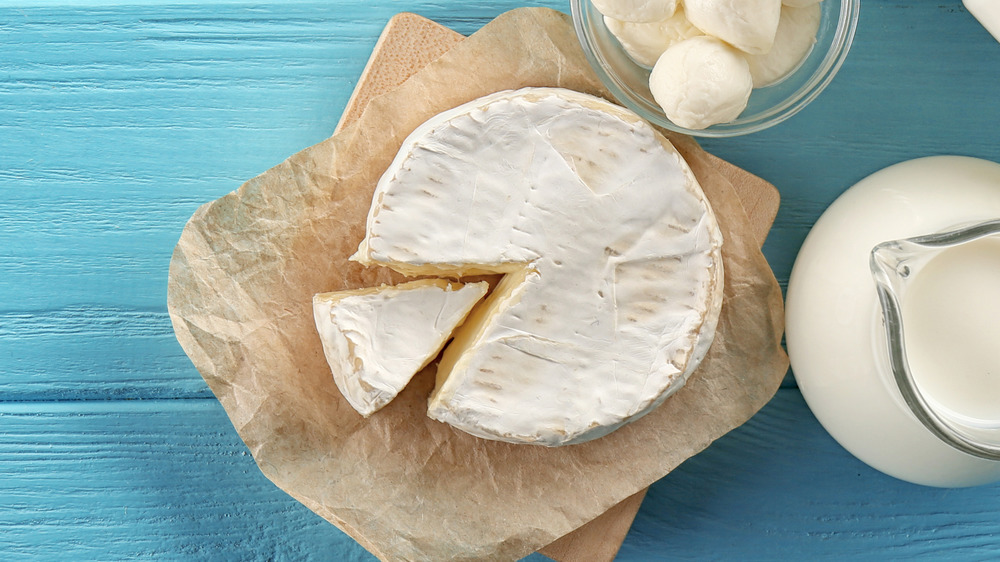What You Didn't Know About Brie
We may receive a commission on purchases made from links.
Oh, Brie! Glorious Brie! Brie is the most globally well-known French cheese and even bears the nickname "The Queen of Cheeses" due to its high regard. This soft cheese is named after the French region Brie, where it was originally made, according to Cheese.com. Brie sports a pale yellow hue with a waxy, ivory white rind, and has a creamy texture with a sweet, mild taste. Brie is high in fat but rich in proteins, vitamins, and minerals, such as vitamins A and B12, riboflavin, and calcium (via Healthline).
Brie is an extremely versatile cheese — it can be eaten by itself; paired with crackers, fruits, jams, and nuts; baked inside of a puff pastry; incorporated into macaroni and cheese; and so much more. Taste of Home and Delish have curated lists of crowd-pleasing recipes that call for Brie, including hors d'oeuvres, mains, and even desserts.
Here are some appetizing facts about the coveted, elegant, soft cheese that's been eaten around the world for millennia.
Brie was beloved by royals
Way back in the eighth century, French Emperor Charlemagne (aka Charles the Great) got a taste of Brie at a monastery in Reuil-en-Brie, just east of Paris. Not surprisingly, it was love at first bite. Because he, the King, approved of this particular fromage, Brie became an instant hit across the population.
Charlemagne wasn't the only regal figure to adore Brie. As the story goes, King Henry IV was introduced to Brie by Queen Margot, and highly favored the creamy delight — rumoredly more than his own wife. According to Pong Cheese, the Queen frequently requested that the cheese be served to please her husband. He even liked eating Brie with her rather than going on rendezvouses with his mistress, Gabrielle d' Estrées. Sounds like a great guy.
According to War and Cheeseboard, at the Congress of Vienna (one of the most well-known international conferences in history), French diplomat Talleyrand requested an intermission to arrange a formal cheese contest after the diplomats started arguing about which country produces the finest cheese; more than 60 cheeses were tasted and judged. Lord Castlereagh presented Stilton, Dutch minister Baron de Falck nominated Limberger, Italy offered Strachino, and Switzerland suggested Gruyere (via Delishably). And then, finally, Brie de Meaux entered the tournament. The French cheese was so fawned over by attendees that it was voted the victor and declared "Le Roi des Fromages" — The King of Cheeses. An absolutely, totally valid reason to break away from politics!
Brie may not actually be French
Sort of like how French fries may actually be from Belgium (via National Geographic) and fortune cookies were invented in San Francisco (via Eat This, Not That), it's interesting to question whether or not Brie cheese was truly invented in France. Rumor has it that one of the earliest forms of Brie cheese — or a variety of cheese that was pretty dang similar — was created by accident in the Middle East, a far stone's throw from France.
As legend states, one day, a nomad filled his bag with some milk before embarking on a long journey by horseback. His saddlebag was made from an animal carcass and lined with rennet, an enzyme. The combination of the milk, the hot sun, and this enzyme formed curds and whey — very similar to what people know today as Brie (via Delishably). This cheesy origin story is certainly up for debate, but it's fun to learn about the Brie could've been.
Authentic Brie can't be found in the U.S
We all know that one person who studied abroad in Ireland and claims that Guinness "tastes so much better" across the pond. Well, while annoying, they're probably not wrong. And the same goes for Brie cheese in France, which is quite different from Brie in the U.S.
That being said, the Brie found in America is still delicious, though it's made differently than it is in France. The reason? Authentic French Brie cannot be imported into the U.S. because it's made with raw cow's milk and would need to be aged for at least 60 days to qualify for importation, according to The Spruce Eats. Unfortunately, that two-month time frame would cause the Brie to over-ripen, making it less than pleasant for consumption.
However, there is some good news! France does export a version of Brie stateside that's as close to the real thing as Americans can get. It's a soft-ripened cheese made from cow's milk with a creamy interior and white rind. It's usually sold in rounds, like you've likely seen in the market. The flavor is rich and sweet and it has a creamy, buttery texture like the orthodox raw milk Brie. These Bries made with pasteurized milk are milder in flavor than raw milk Brie cheese. Still amazing, still delicious.
The rind is edible -- and good for you
When you unwrap a wheel of Brie, you'll notice a firm, white, waxy outer rind that looks and feels sort of like paper. Before you peel it off and throw it in the trash, though, consider its benefits. This white exterior is actually Penicillium candidum, an edible mold that's considered a delicacy in France, according to Whole Foods Market. Some even consider discarding it as blasphemy or bad manners! This mold creates Brie's iconic bloomy rind on the exterior of the rounds. It has a chewy, pillowy texture and earthy taste that complements the soft, creamy cheese quite nicely (via Président Cheese).
Actually, the rind is what gives Brie cheese its texture, color, and taste. The protective mold breaks down fats and proteins, creating increasingly creamy balance over time, according to The Spruce Eats. If you try it, you just may love it! If not, pas de soucis (no worries). "Casting it aside is cheating yourself out of a culinary experience. And if the last time you had Brie rind was ten years ago, just give it another shot," suggests Bon Appétit. So, there you have it, folks: Leave no rind behind!
Cameron Diaz is a big Brie fan
There's something about Brie! Retired movie star, producer, and model Cameron Diaz is a shameless cheese enthusiast. Heck, she even wrote about it; in her 2013 self-love book, The Body Book, Diaz revealed just how much she adores the stuff. "I love cheese. String cheese, cheddar, goat, parmesan, gouda, feta, blue, double-triple-cream, Brie. I love that cheese," she wrote (via Us Food). Other die-hard cheeseheads include Chrissy Teigen, Hilary Duff, Seth Meyers, and Cardi B. (No word from Brie Larson.) But seriously, come on — who doesn't love a good grilled cheese sandwich, a snack plate filled with cheese and crackers, or a deluxe charcuterie board with all the fixins? Celebrities, they're just like us!
Mild, mellow, and multitalented, Brie cheese is a solid (no pun intended) choice for cheese boards and lunch boxes alike. And like many varieties of cheese — and pretty much every type of food ever — no Brie is created equally. If you're looking for a good brand or two to try, The New York Times has you covered. Bon appétit!
